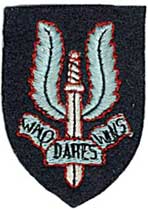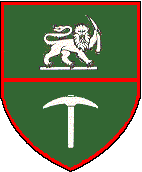The Origins of the Rhodesian SAS Title
Rank Structure & Badges of Rank
Roll of Honour
Army Home Page
Site Home Page
Formation: 1 Janaury 1964
Roles
a. Military assistance to the Civil Power.
b. Internal Security Operations, Urban and Rural (ISOPS).
c. Counter Insurgency Operations (COINOPS).
d. Classical War Operations.
with particular emphasis on:
a. Ability to cut off terrorists operating in the country from bases outside the country.
b. Small patrols capable of operating for long periods in any type of country.
c. Ability to cross any type of country or water.
d. Water patrols of lakes/rivers.
e. Reconnaissance.
A brief History

(Extract from Dudley Wall's excellent book, Insignia and History of the Rhodesian Armed Forces 1890 - 1980)
The Rhodesian SAS was reformed in April 1961 and was based at Ndola in Northern Rhodesia. Brian Robinson, who was serving with 22nd SAS at the time of UDI, came back to Rhodesia to take command of the new SAS unit, with six ex members of C Squadron. A further six members were sent to England to do the selection and training course, returning to Rhodesia after 4 months, and the new C Squadron was operational. The members of C Squadron took part in operations in Aden in the Middle East with 22nd SAS and gained valuable experience in the desert.
At the break up of the federation, thirty one members of the SAS Squadron moved to Southern Rhodesia and started to rebuild C Squadron in Salisbury. In May 1964 the SAS took part in their first operation at Kariba against terrorist insurgents from Zambia. The squadron was thereafter deployed regularly on operations in the Zambezi Valley and along the Eastern Border with Mocambique.
In 1972 the war started in earnest and the SAS spent a lot of time in Mount Darwin and in Mocambique's Tete Province. As the war progressed the SAS was used more and more in external operations which included raids on Nkomo's house in Lusaka and Zanla/Zipra bases in Zambia, Mocambique and Botswana. The SAS deployed traditional special forces role throughout the bush war and one of their more unusual tasks was to create a counter geurilla organisation (Renamo) in Mocambique in the hopes that they would take on Frelimo and distract the assistance given by the Mocambique government to the terrorist forces of Rhodesia which were operating from that country.
In June 1976 C Squadron became 1 (Rhodesian) SAS Regiment. In 1979 the SAS moved from Cranborne Barracks, Salisbury to new barracks which were given the name Kabrit after the original base in Egypt in World War II days. The SAS was disbanded in 1980 when the country became Zimbabwe.


















